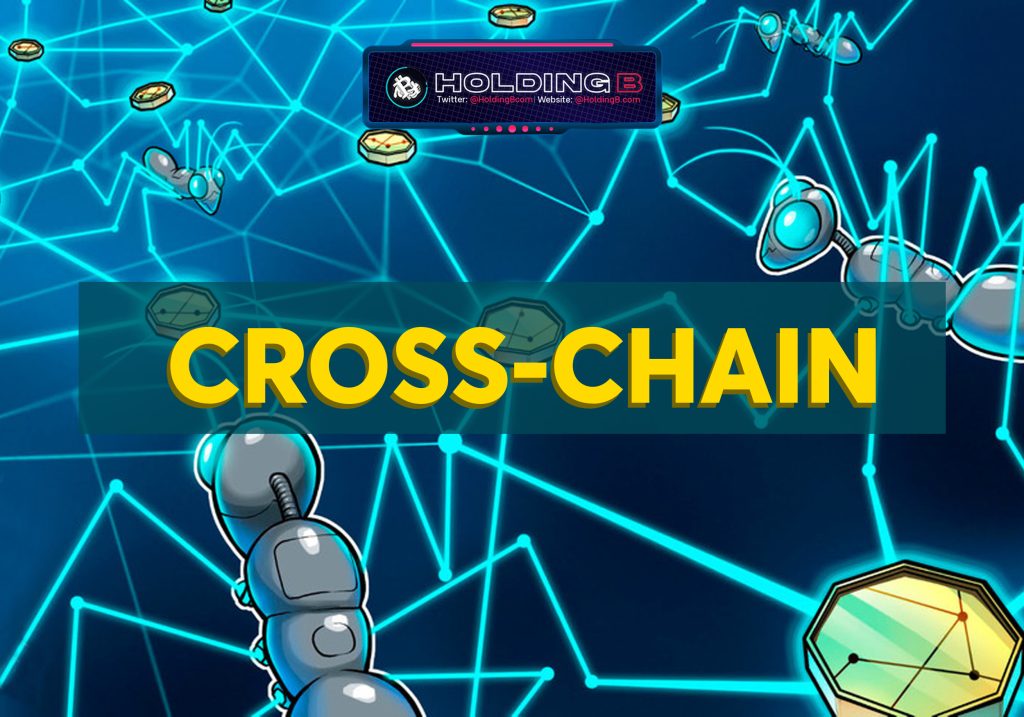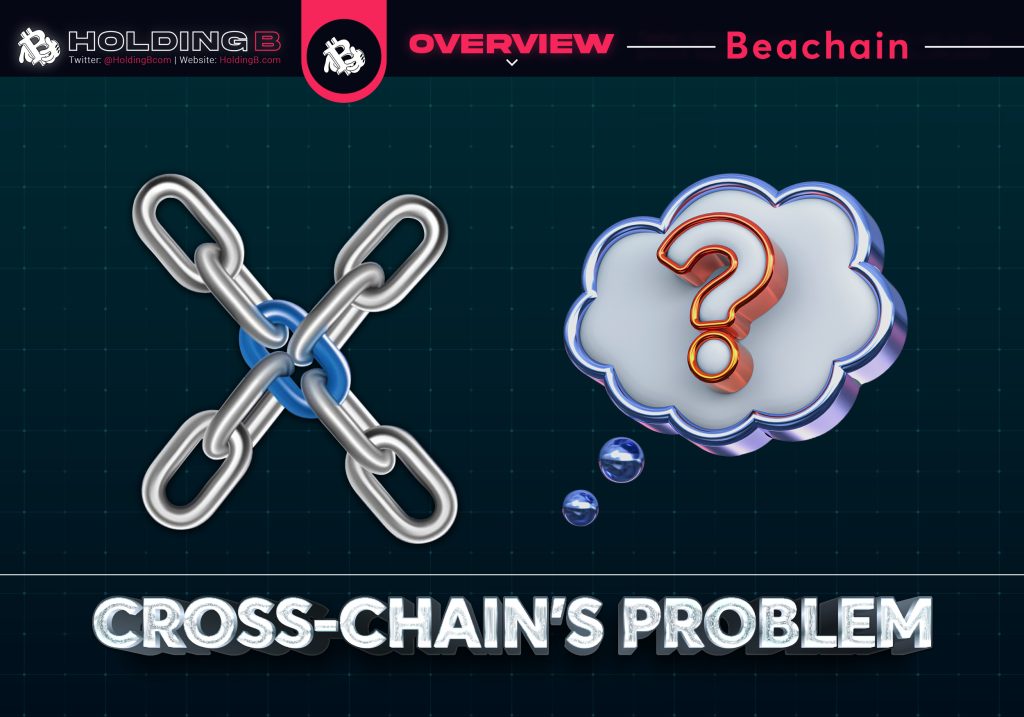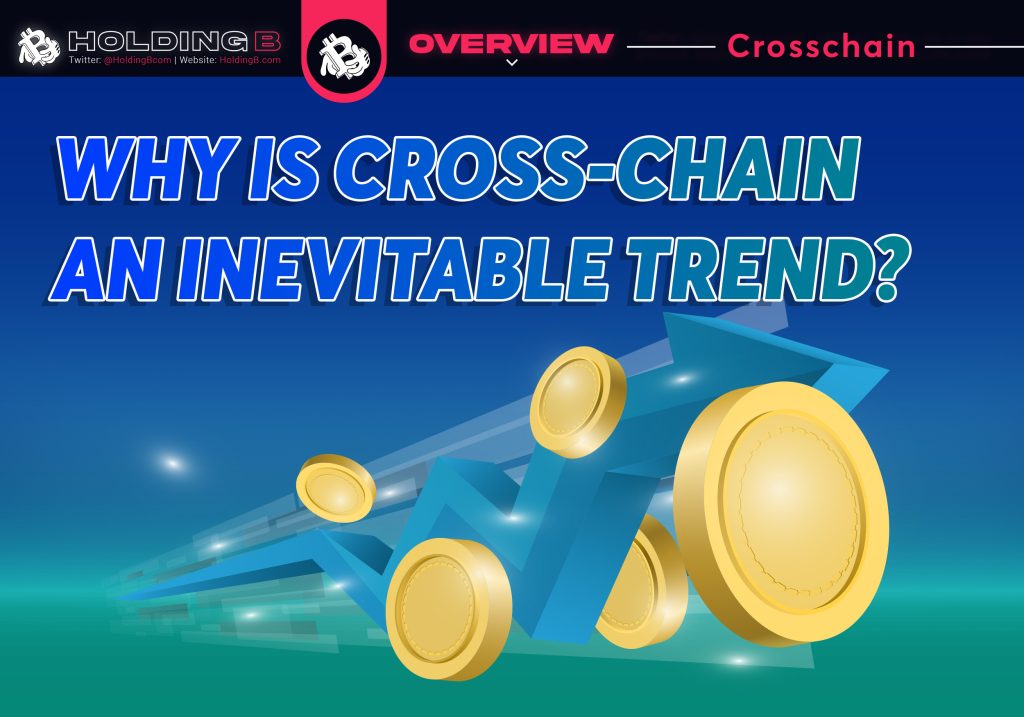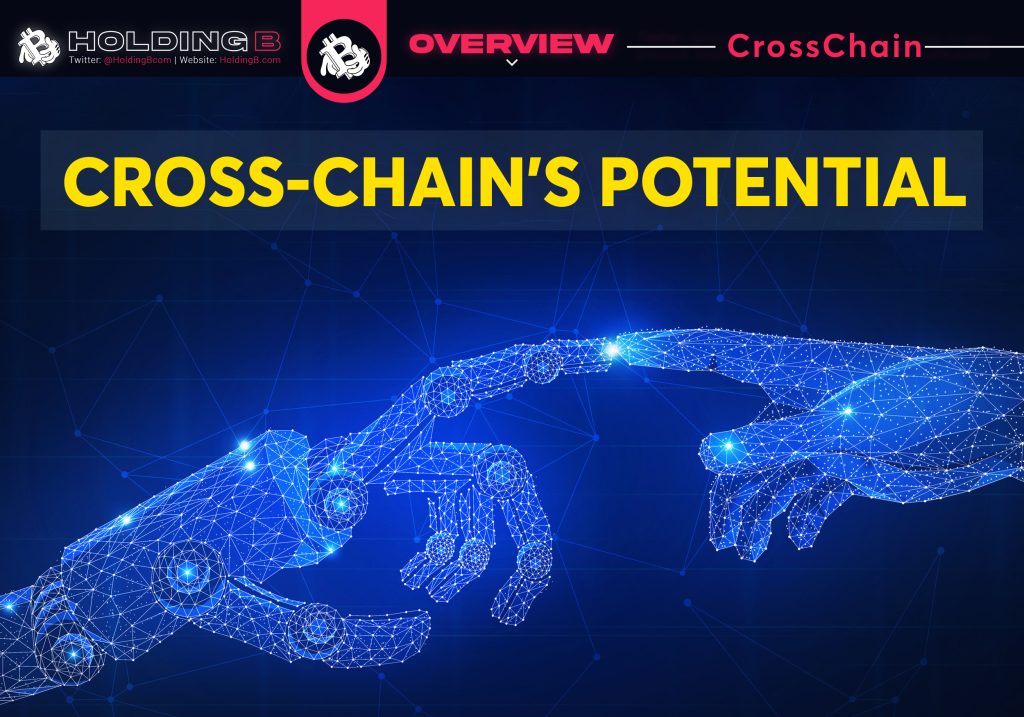
Hi, it’s us team HoldingB again! today let’s read about Cross-chain and you’ll know why it is so important for the Crypto community
What is Cross-Chain?
Blockchain and distributed ledger technologies are growing in popularity daily. Connecting these new chains is becoming more crucial as more consumers become aware of developing technology’s potential. Let’s go further to understand what blockchain interoperability is why it is so critical.
The number of blockchain initiatives is increasing because developers are thinking outside the box to maximize the possibilities of the technology. Additionally, the rise reflects the recognition that no one technology would be able to meet all blockchain requirements simultaneously.
Cross-chain technology is becoming a primary subject of debate as to the final answer for improving blockchain interoperability. In layman’s words, cross-chain technology is a relatively new concept that aims to transfer value and knowledge across distinct blockchain networks.
While increased use of established networks such as Ripple, Bitcoin, and Ethereum is a positive development, it has created a slew of problems, chief among them economic and technological scaling constraints. As said before, most blockchain networks function in segregated ecosystems to serve a particular set of requirements.
The Cross-chain function in isolation has mostly prevented individuals from reaping the full advantages of distributed ledger technology. Due to the difficulty of various blockchains interacting with one another, individuals have been unable to reap the full benefits of blockchain technology. Cross-chain technology aims to address all of these problems by providing interoperability across blockchains, allowing them to interact and exchange information more easily.
A Cross-chain is the capacity of two relatively independent blockchains to communicate with one another. In other words, it enables blockchains to communicate with one another due to their uniform construction. Cross-chains overcome the constraints of a single chain. Cross-chain contact may be classified as isomorphic or heterogeneous, depending on the underlying technology. For isomorphic chains, the security method, consensus process, network architecture, and logic for verifying block creation are all consistent, making interchain communication very easy
Cross-chain’s Problems

The basics of Cross-chain are quite simple, but in reality, to wrap BTC into wBTC, you have to transfer the amount of BTC you want to wrap to a 3rd party. Then the 3rd party will review the wrapping request and Validate the transaction, they will mine wBTC and send it back to you.
The Cross-chain setup the problem is if the third party that is hacker attack, what will it be like? It is easier to understand that the hacker will be able to take the wBTC number you transfer or maybe they will mine the wBTC infinitely.
Multisig Wallet is the application to solve this problem, because of the nature of multi-signature wallets, the transaction must be identified by more parties. Assuming there are 7 parties involved, it will need 4/7 confirming parties, the new transaction is considered valid and informative. However, multi-signature wallets are only used to confirm transactions. If the wallet has many assets, it is still a problem for users because hackers are always around.
two Types of Cross-chain to know for newbies

For Isomorphic Cross Chain,the security mechanism, consensus algorithm, network topology, and block generation verification logic are consistent, and cross-chain interaction between them is relatively simple. Tendermint-based chains like Cosmos can adopt Isomorphic Cross Chain. You can understand its simple mechanism like this.
Suppose we have two strings A and B. To be able to transfer assets back and forth between these two chains, the first thing is that they need to be registered with each other first. They do this by sending the genesis block and Chain ID to each other for confirmation. The user then sends a Cross-chain packages transaction to A to request it to be sent to B. Thread A will receive the request and notify thread B of this event.
Heterogenous Cross Chain will be more complex than Isomorphic. Because, it has heterogeneity in security mechanism, consensus algorithm between chains. The transfer mechanism is similar to the isomorphic Cross Chain. However, to solve that inconsistency problem, the solution of using a third-party service platform is applied to store transactions.
Suppose in the case of Cosmos, with heterogeneous chains like this, PegZone or Peggy is the third service I just talked about. This one PegZone will consist of five parts: Smart Contract, Witness, PegZone, Signer, Relayer. It will do the conversion between the strings here.
Why is cross-chain an inevitable trend?

Currently, on the crypto market, there are many ecosystems, which can be mentioned by a few prominent names: Ethereum, BSC, Solana, Avalanche, Near, etc. Besides, there are many new chains: Mina, Fantom, Kava, ICP, … along with the appearance of layer 2 is also building a huge ecosystem of its own such as Polygon, Arbitrum.
But if everyone sees the problem of ETH as scalability and transaction fees, then at a more macro level, the problem of ecosystems is not connecting. If you want to swap Bitcoin (chain ETH) to Raydium (chain Sol), you have to transfer Bit to cex exchange (specifically, FTX exchange) as an intermediary to transfer then you have Bit chain Sol and then swap from here. Bit via Ray.
The benefits of Cross-chain
Increased interactivity: A blessing because it represents the growing adoption and demand for the technology. Cross Chain makes it possible for blockchains to interact with each other. This interaction can help combine the strengths of each platform to deliver a complete blockchain solution. The increasing number of blockchain platforms in the market is a blessing.
It helps to solve the weaknesses of other centralized models (centralization, high costs, long transaction times…). Cross-chain technology enables the connection between two independent blockchain networks. It eliminates information silos from blockchain incompatibility. Furthermore, cross-chain technology allows the transfer of information like transaction proofs, assets, and contract calls. In decentralized finance (Defi), cross-chain technology is typically utilized for token swaps.
Therefore, cross-chain technology can bring benefits because the transaction process will no longer be concentrated on the few major blockchains.
The drawbacks of Cross-chain
Cross Chain seems to be still too new. The Cross Chain solutions created have not yet been able to effectively communicate. Furthermore, the individual blockchains themselves are still a work in progress. Therefore, it will probably take more time to develop and perfect to achieve optimal performance. It is giving rise to more isolated networks, creating a disconnected ecosystem. Other possible methods to create interoperability include tools such as atomic swaps, oracles, and state channels. However, these solutions lack security and efficiency when compared with a cross-chain solution. Without cross-chain technology, scalability and innovative opportunities will be limited.
>Cross Chain will probably be the trend in the future.
Cross-Chain’s Potential To Propel Defi Forward

Why is Cross-chain technology so important?
Because it’s viewed as one of the main tools to help continue the growth and expansion of decentralized finance (Defi).
If elements of the Defi industry are not able to work with each other smoothly, decentralized finance will be hindered in its attempts to challenge, or at the very least, bring traditional finance to the crypto world.
Blockchain interoperability also allows people to make payments across multiple blockchains, fueling an energetic digital economy where many believe multi-token wallet systems should emerge.
Hopes are crypto users who can just rely on a single wallet to transact and transfer coins across different blockchains will continue to help speed up mainstream crypto adoption.
The first cross-chain asset manager for DeFi
DeHive is the first crypto asset manager that is designed to work cross-chain. The DeHive team has introduced the system of unique Clusters and keeps improving it every day. Clusters help unite crypto-assets of a particular chain into one index, thus, making the process of crypto trading easier and bringing higher profit on investments.
DeHive Clusters allow users to create a portfolio within different ecosystems and keep it well-balanced automatically. So, in other words, Cluster is a yield generating index similar to the ones in traditional finance in a way. Besides, the cluster lock mechanism helps generate more profit by yield farming, thus, strengthening the user portfolio.
DeHive cross-chain asset management system is user-centered and completely authentic. All we care about is for you to get higher profit with less effort.
See ya in the next article !
Don’t forget to follow useful articles about Crypto Market from team Holding B !!!
- Telegram Channel: https://t.me/HoldingBcom
- Telegram Group : https://t.me/HoldingB
- Website : https://holdingb.com/
- Twitter : https://twitter.com/HoldingBcom






I just learned about cross-chain thanks to this post